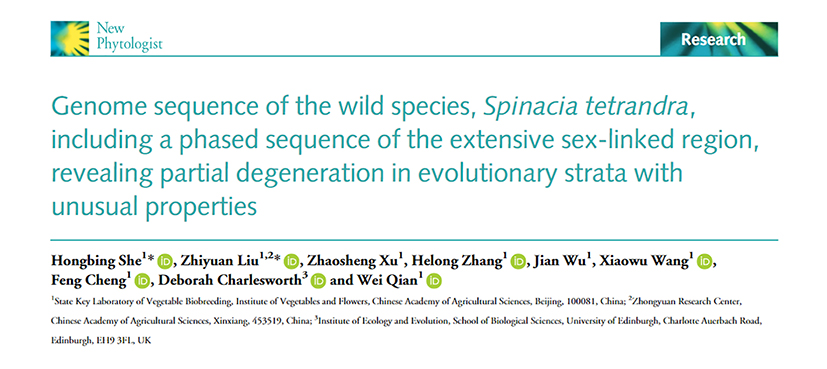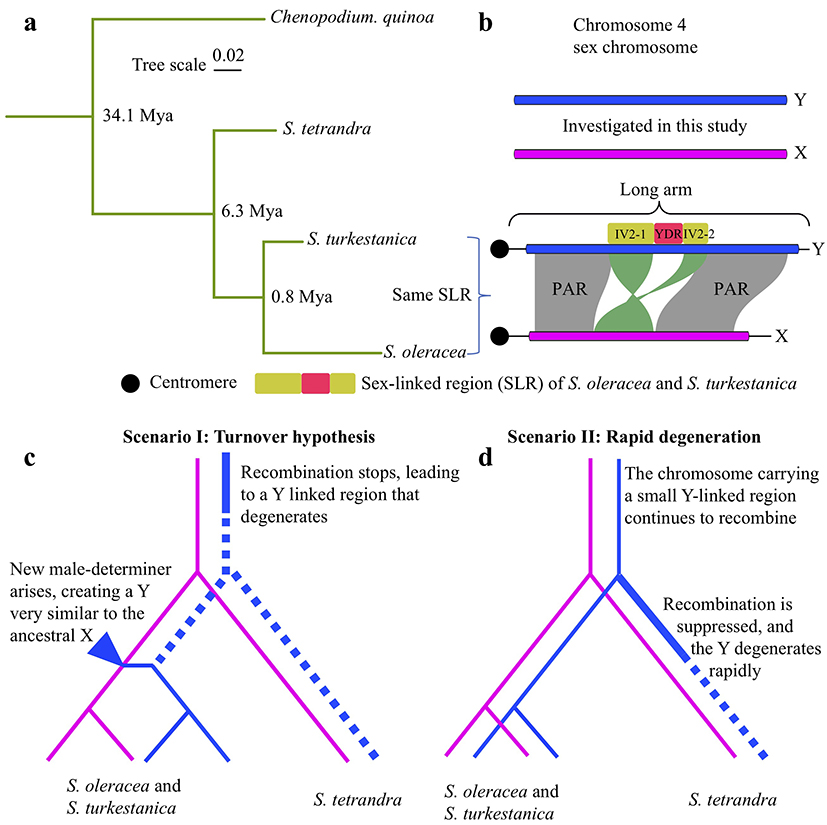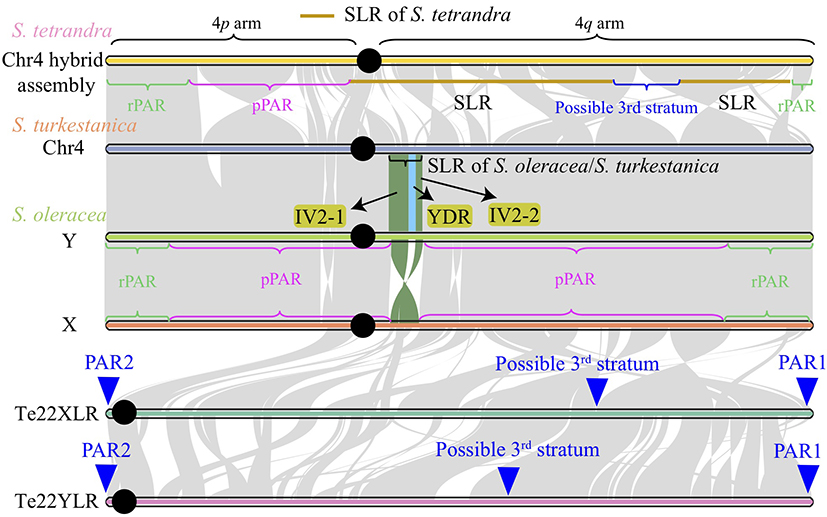Spinach (Spinacia oleracea L.) and its two wild species, S. turkestanica and S. tetrandra, are dioecious plants, which are ideal for exploring the evolution of sex chromosomes. Recently, Qian Wei's team at the Institute of Vegetable and Flower Research, Chinese Academy of Agricultural Sciences (CAAS), together with the University of Edinburgh (UK), published a paper entitled ‘Genome sequence of the wild species, Spinacia tetrandra, including a phased sequence of the extensive sex-linked region, revealing partial degeneration in evolutionary strata with unusual properties’ in the New Phytologist. The paper analyses the sex-linked regions of two wild species of spinach, revealing patterns of sex chromosome evolution in the wild species of S. tetrandra.

Previous studies resolved the sex-determining regions of the spinach cultivar, including the 10 Mb male-specific region (YDR) and the 14.1 Mb large-scale inversions located on either side of it. Preliminary studies have clarified that the cultivar has similar sex-linked region to its wild relative S. turkestanica (diverged around 0.8 million years ago), whereas the wild species S. tetrandra (diverged around 6.3 million years ago), which diverged much further back in time, has a completely different sex-linked region and does not contain a YDR. Based on this, two hypotheses are proposed, (1) the turnover hypothesis and (2) the rapid degeneration hypothesis.

Fig. 1 Background information on the sex chromosomes in the three Spinacia species, and two scenarios for their evolution
In this study, S. tetrandra was found to contain a sex-linked region of approximately 133 Mb, which is much larger than that of the cultivated and wild species of S. turkestanica (only 12% of the chromosome region is sex-linked). The sex-linked regions of the X and Y chromosomes of S. tetrandra were assembled by Illumina and long-read sequencing, and two evolutionary strata were found to have formed the sex-linked regions. However, the old evolutionary strata (Stratum 1) had better covariance between the X and Y chromosomes and less genetic degeneration, retaining some ancestral genes. The young evolutionary strata (Stratum 2) is located near the mitotic grains and shows more severe gene loss and accumulation of repetitive sequences despite a shorter evolutionary time. This phenomenon may suggest that intrinsic characteristics of chromosomal regions (e.g., recombination frequency) may influence sex chromosome degeneration.

Fig.2 Comparison of sex chromosomes and among the three Spinacia species.
Phylogenetic analyses support the sex chromosome turnover rather than the rapid degeneration hypothesis. Specifically, the sex-linked regions of spinach cultivars and S. turkestanica originated from a turnover of the X chromosome from the wild species of S. tetrandra, which formed a new male-determining locus, while S. tetrandra retained a more primitive state of the sex chromosomes, which ultimately led to the formation of an extra-large (∼133 Mb) sex-linked region.
In summary, this study deciphered the sex-linked region and its evolutionary pattern of S. tetrandra through the integrated multi-omics analysis, which not only deepened the understanding of the mechanism of plant sex evolution, but also laid the foundation for the analysis of the sex determination mechanism of spinach.
Researcher Hongbing She and Researcher Zhiyuan Liu from the IVF-CAAS, are the co-first authors of this paper; Researcher Wei Qian and Researcher Feng Cheng from the IVF-CAAS, and Deborah Charlesworth of University of Edinburgh, United Kingdom are the co-corresponding authors. This work was supported by the Central Public-interest Scientific Institution Basal Research Fund (IVF-BRF2023002), Youth innovation Program of Chinese Academy of Agricultural Sciences (Y2023QC07), Chinese Academy of Agricultural Sciences Innovation Project (CAAS-ASTIP-IVFCAAS), and China Agricultural Research System (CARS-23-A-17).
Link: http://doi.org/10.1111/nph.70165.